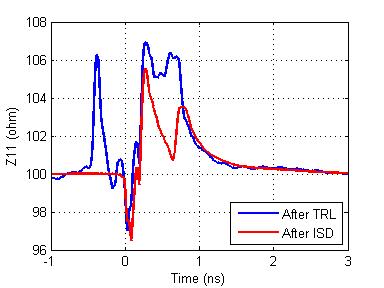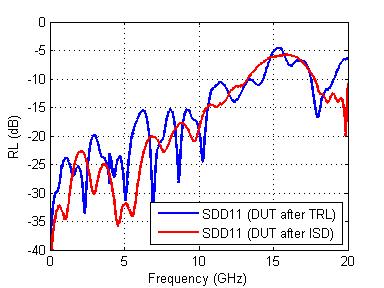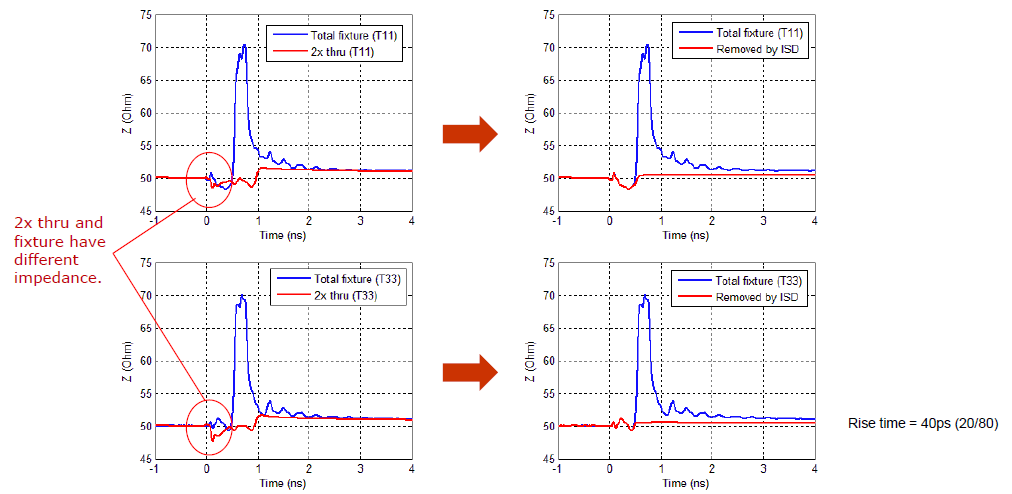甚麼是因果關係 (cau·sal·i·ty) ?
定義 :
- the relationship between cause and effect.
- the principle that everything has a cause.
簡言之:
Can not get something from nothing.
下圖清楚顯示了TRL之後的非因果響應,這歸因於TRL校準板和實際DUT測試夾具之間的阻抗變化。 若使用ISD, 則不會產生"沒有因果關係"的錯誤。 此時還有回波損耗 (Return Loss, RL)的巨大差異。


ISD如何處理 ?
通過優化,ISD可以準確地去嵌入制具的阻抗,而不受 2x-thru的阻抗影響。

ISD 的優勢 :
1. Gives more accurate and causal results
2. Uses standard substrates, etching tolerances and connectors for the test fixture and coupons
3. Extracts crosstalk from a single trace test coupon
4. Extracts small DUT from a large board
5. De-embeds asymmetric structures
6. Runs in batch to stack up multiple jobs


